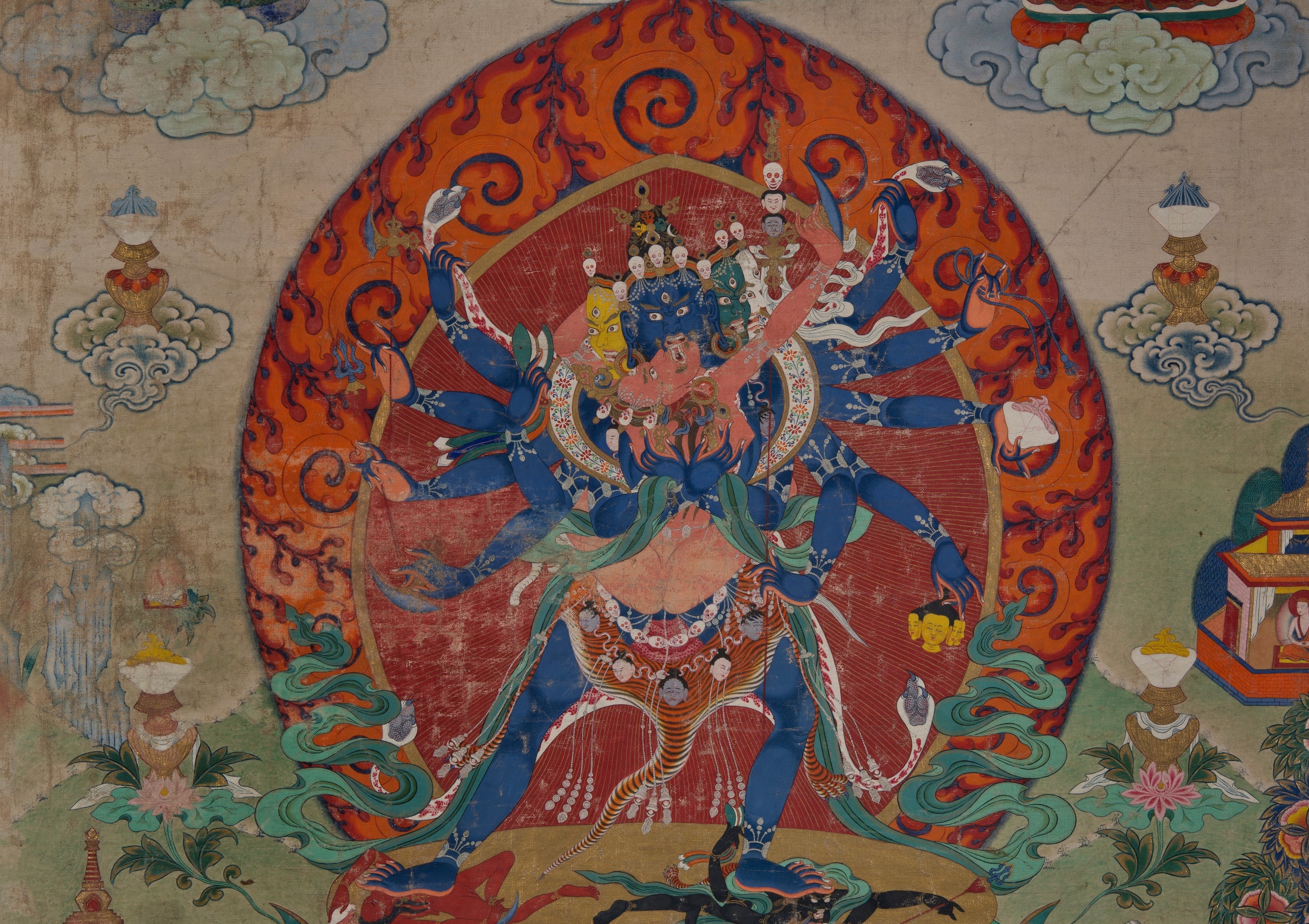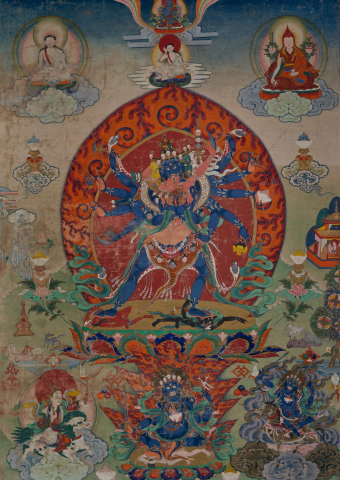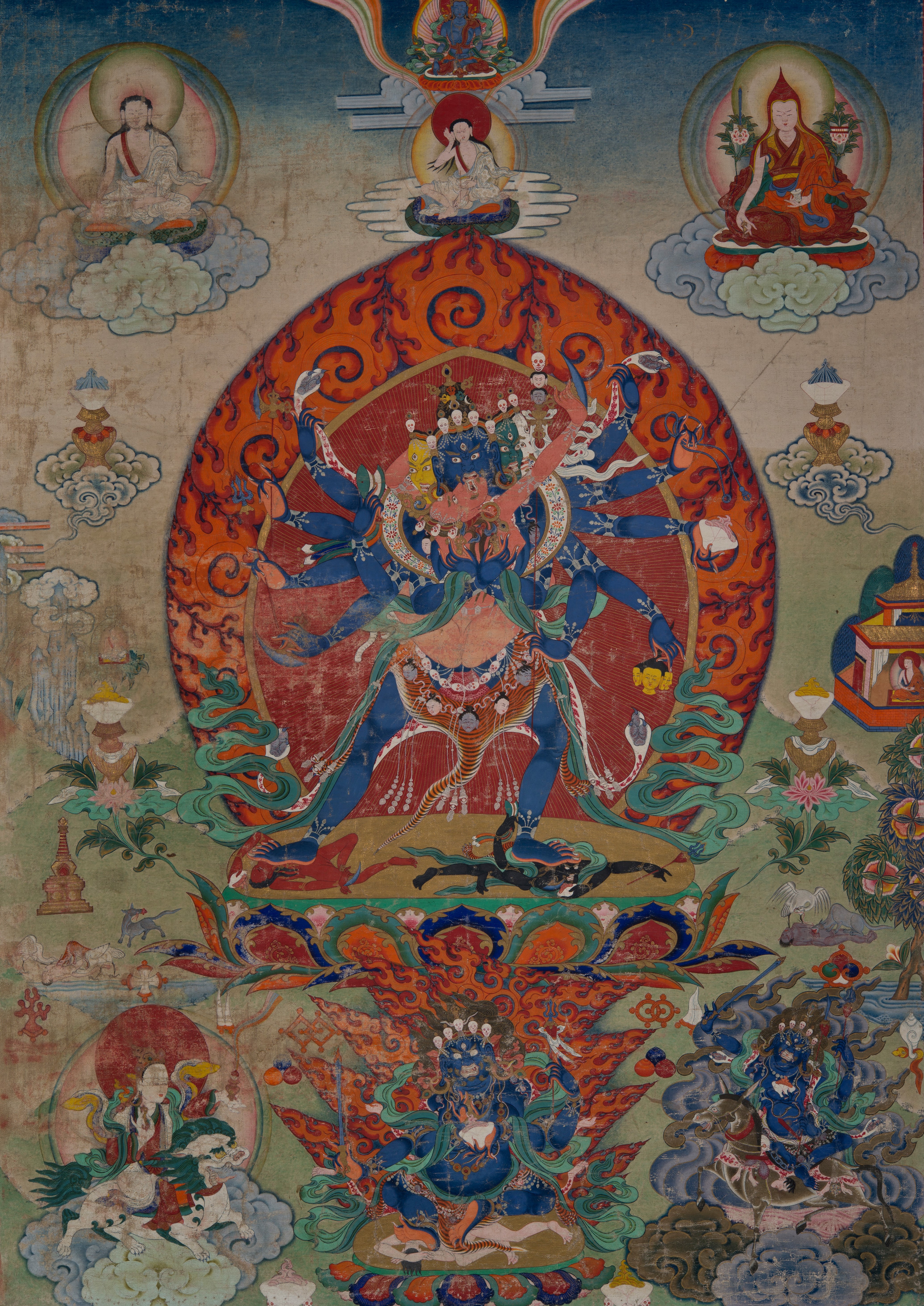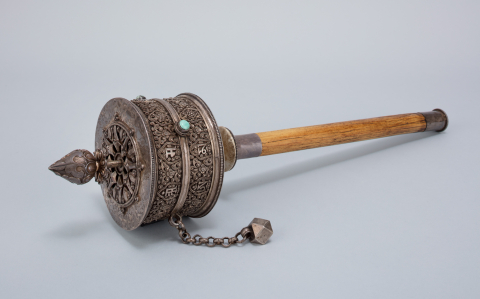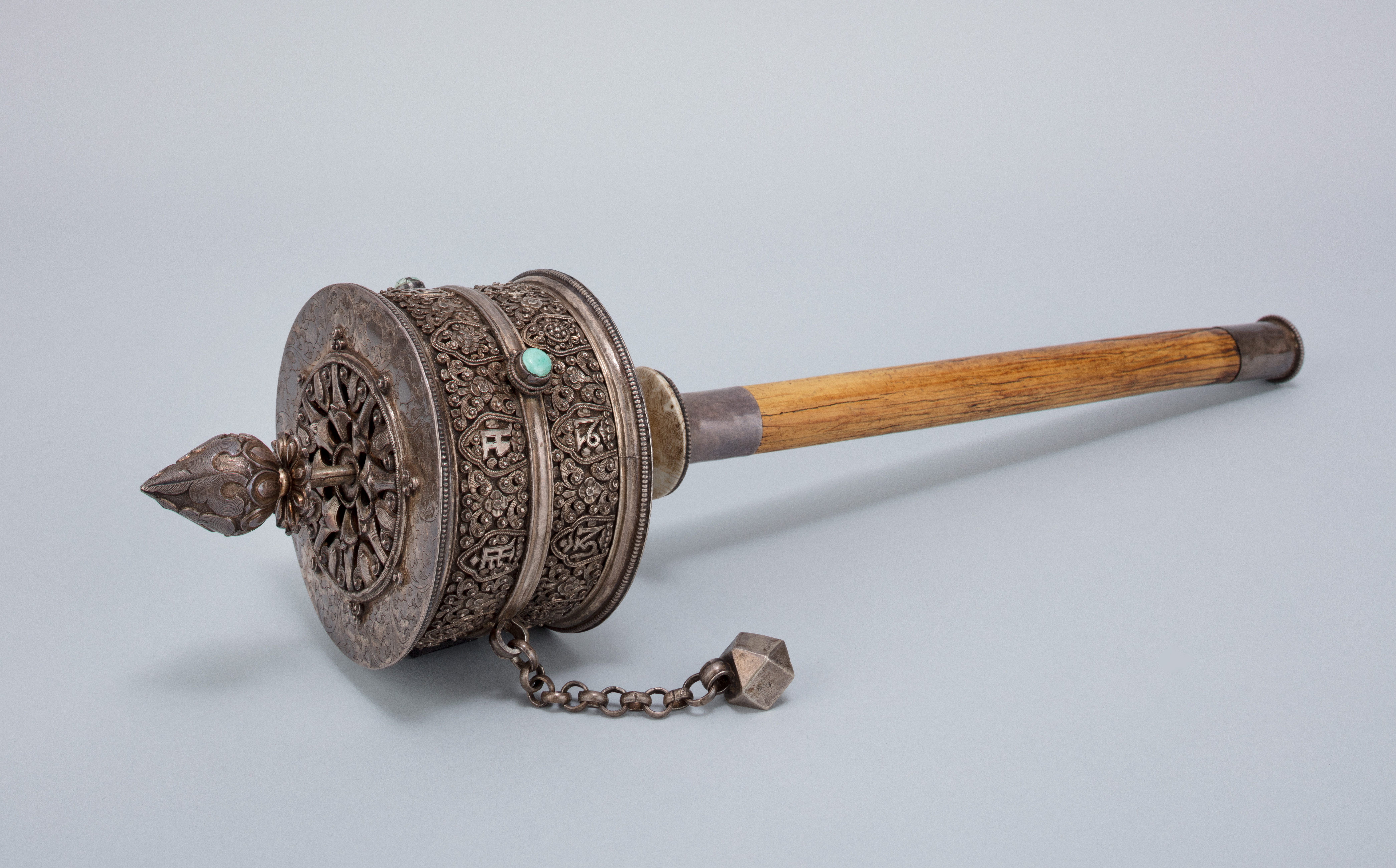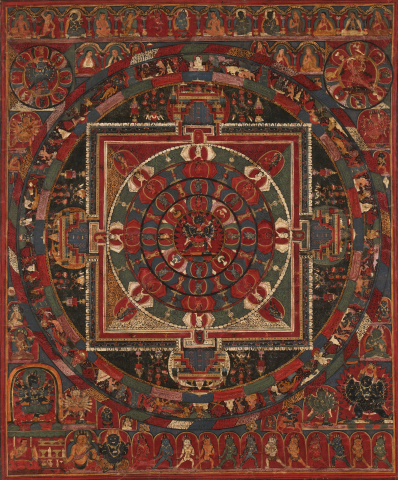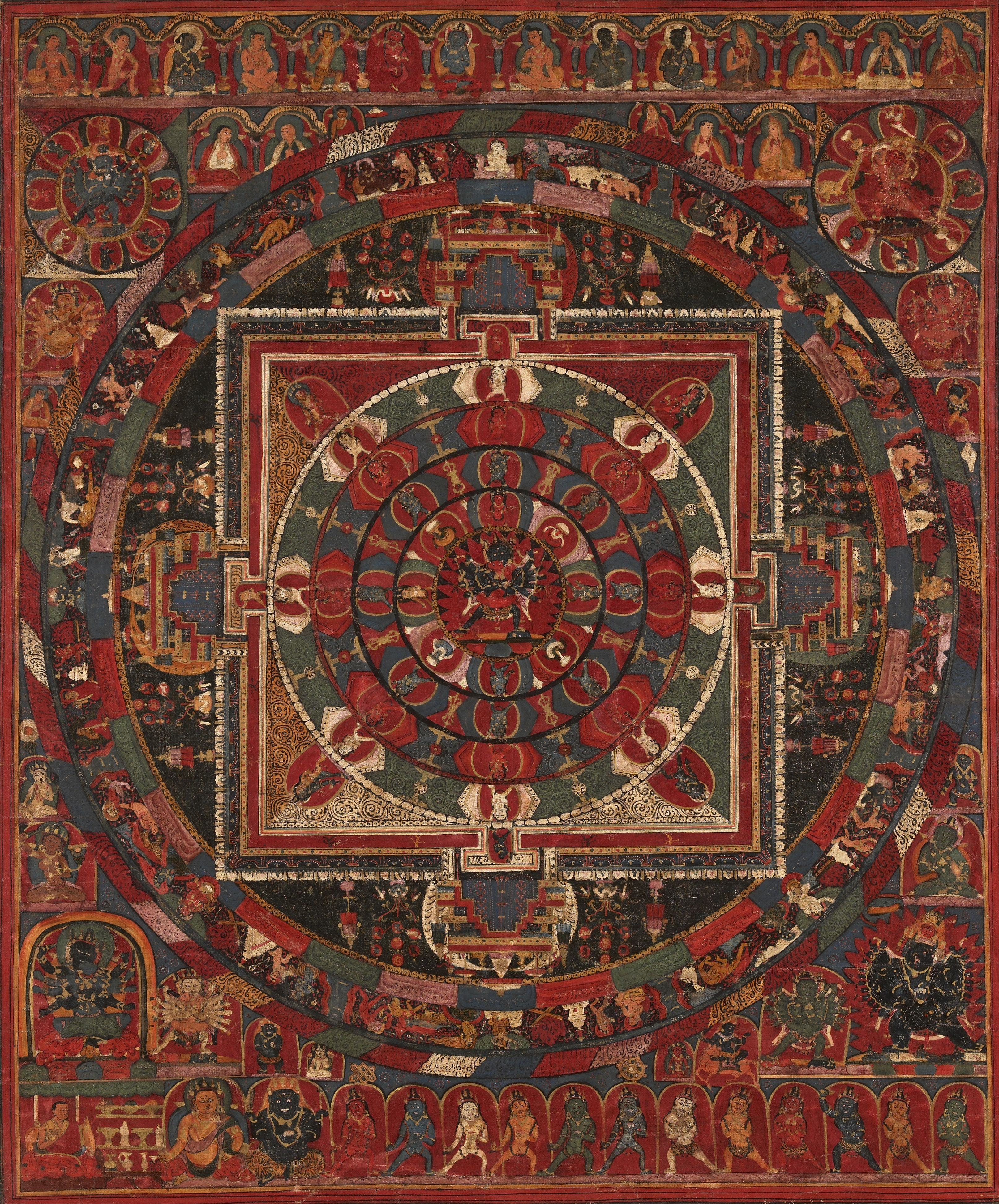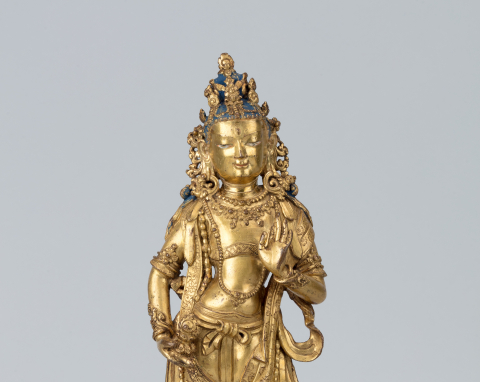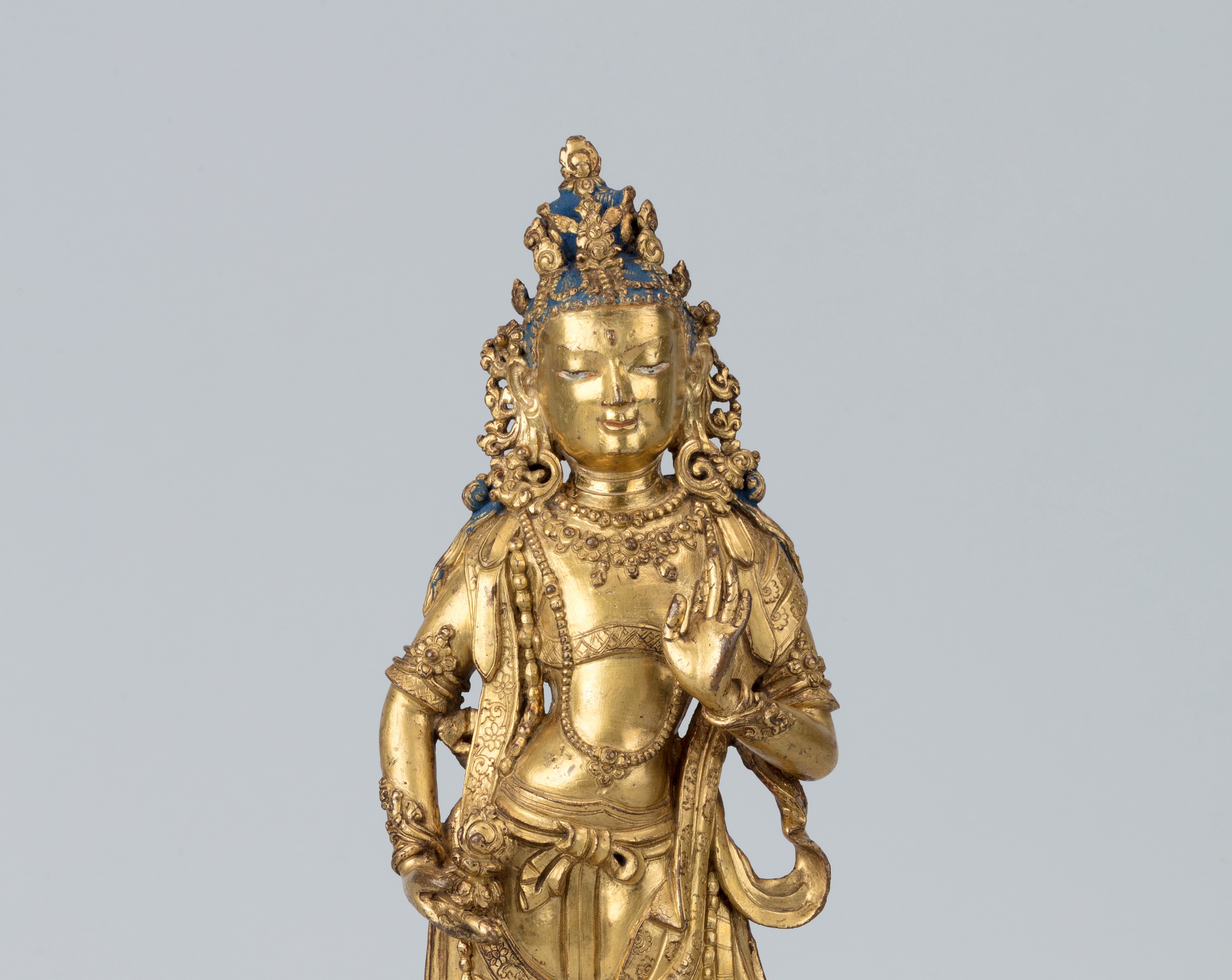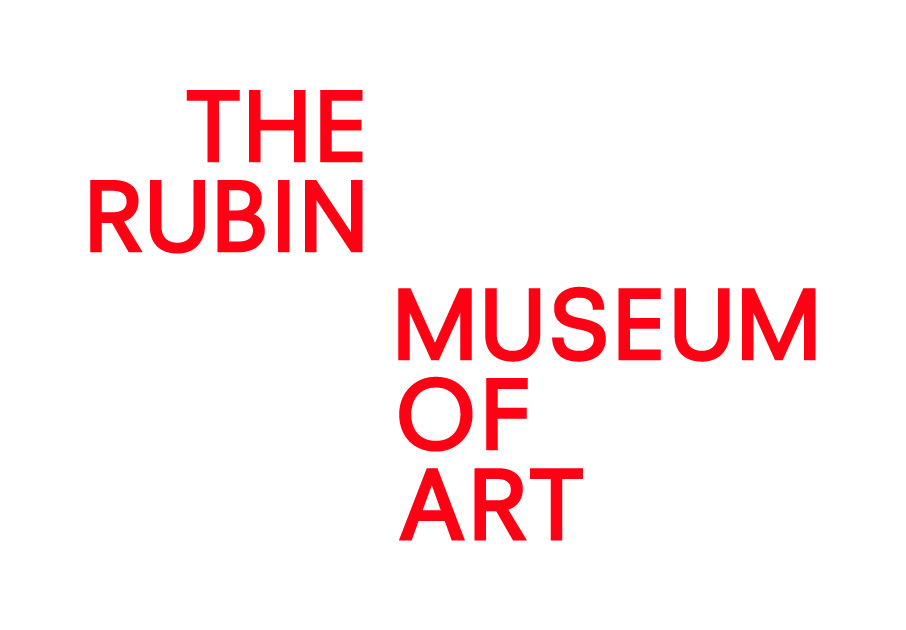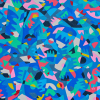Gateway to Himalayan Art introduces the main forms, concepts, meanings, and traditions of Himalayan art with objects from the collection of the Rubin Museum of Art, New York. A large multimedia map at the start of the exhibition orients viewers to the Himalayan region, which encompasses parts of present-day India, China, Nepal, Bhutan, and Mongolia. Gateway invites exploration of these diverse cultural spheres through exemplary objects presented in three thematic sections: Symbols and Meanings, Materials and Technologies, and Living Practices.
In addition to sculptures and paintings, the exhibition features a stupa, prayer wheel, and ritual implements that demonstrate how the commissioning, creation, and use of such objects are tied to the accumulation of merit and hopes for wealth, long life, and religious goals. Elsewhere medical instruments and related paintings address the prevention, diagnosis, and treatment of sickness. Special installations include displays detailing the process of Nepalese lost-wax metal casting and the stages of creating a thangka, Tibetan hanging scroll painting.
This traveling exhibition is organized and provided by the Rubin Museum of Art and curated by Senior Curator of Himalayan Art Elena Pakhoutova. It is an integral component of the Rubin Museum’s Project Himalayan Art, a three-part initiative that also includes the publication Himalayan Art in 108 Objects and a new digital platform. Together they provide introductory resources for learning about and teaching Himalayan art.
Join us for a wide range of free public programs and educational events, including lectures, tours, and hands-on art-making workshops. For information on accessibility and to request accommodations please contact ejs421@lehigh.edu.
This exhibition is co-sponsored by the Lehigh University Office of International Affairs, the Asian Studies Program at Lehigh, and the Department of Religion Studies.
This exhibition is organized and provided by the Rubin Museum of Art, New York.
Supporters of the Rubin Museum's Project Himalayan Art:
Leadership support for Project Himalayan Art is provided by the Henry Luce Foundation.
Lead support is provided by the Ellen Bayard Weedon Foundation, Bob and Lois Baylis, Barbara Bowman, the E. Rhodes & Leona B. Carpenter Foundation, Noah P. Dorsky, Fred Eychaner, Christopher J. Fussner, Matt and Ann Nimetz, Randleigh Foundation, and Shelley and Donald Rubin.
Major support is provided by the Edward & Elizabeth Gardner Foundation, Mimi Gardner Gates, the Monimos Foundation, Rossi & Rossi, Eric and Alexandra Schoenberg, Eileen Caulfield Schwab, and Sandy Song Yan.
Special support is provided by:
Dr. Bibhakar Sunder Shakya, to honor the memory and legacy of Professor Dina Bangdel, art historian, curator, cultural activist, and educator from Nepal.
Samphe and Tenzin Lhalungpa, to honor the memory and works of L.P. Lhalungpa, Tibetan scholar, broadcaster, and educator.
This project is supported in part by the National Endowment for the Arts.
Project Himalayan Art has been made possible in part by a major grant from the National Endowment for the Humanities: Democracy demands wisdom.

